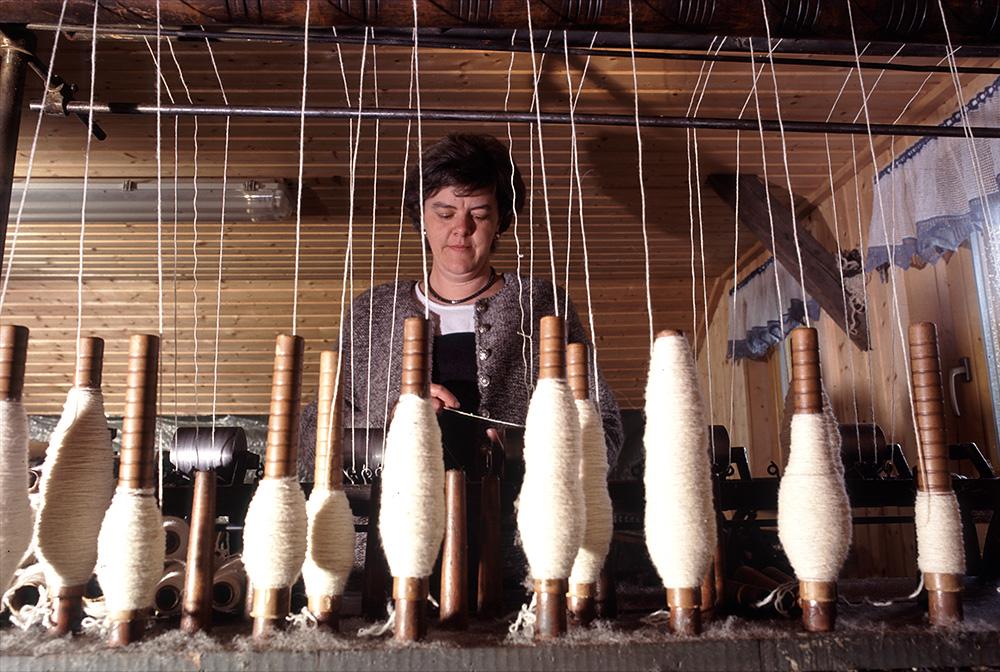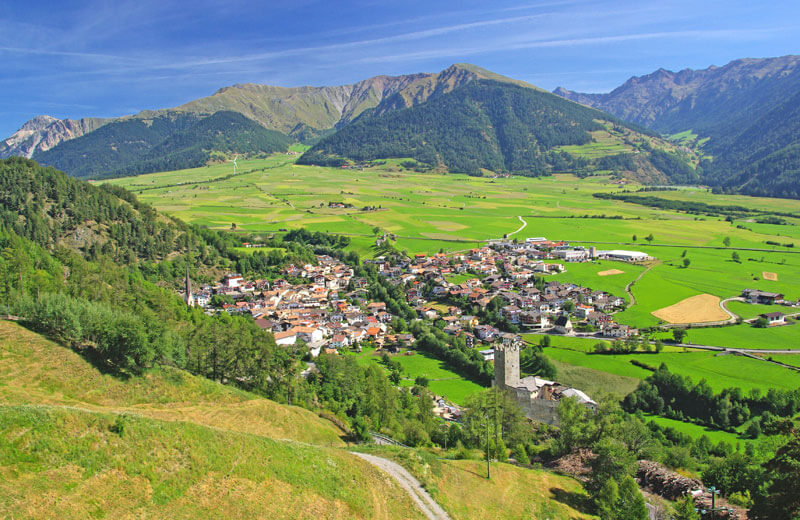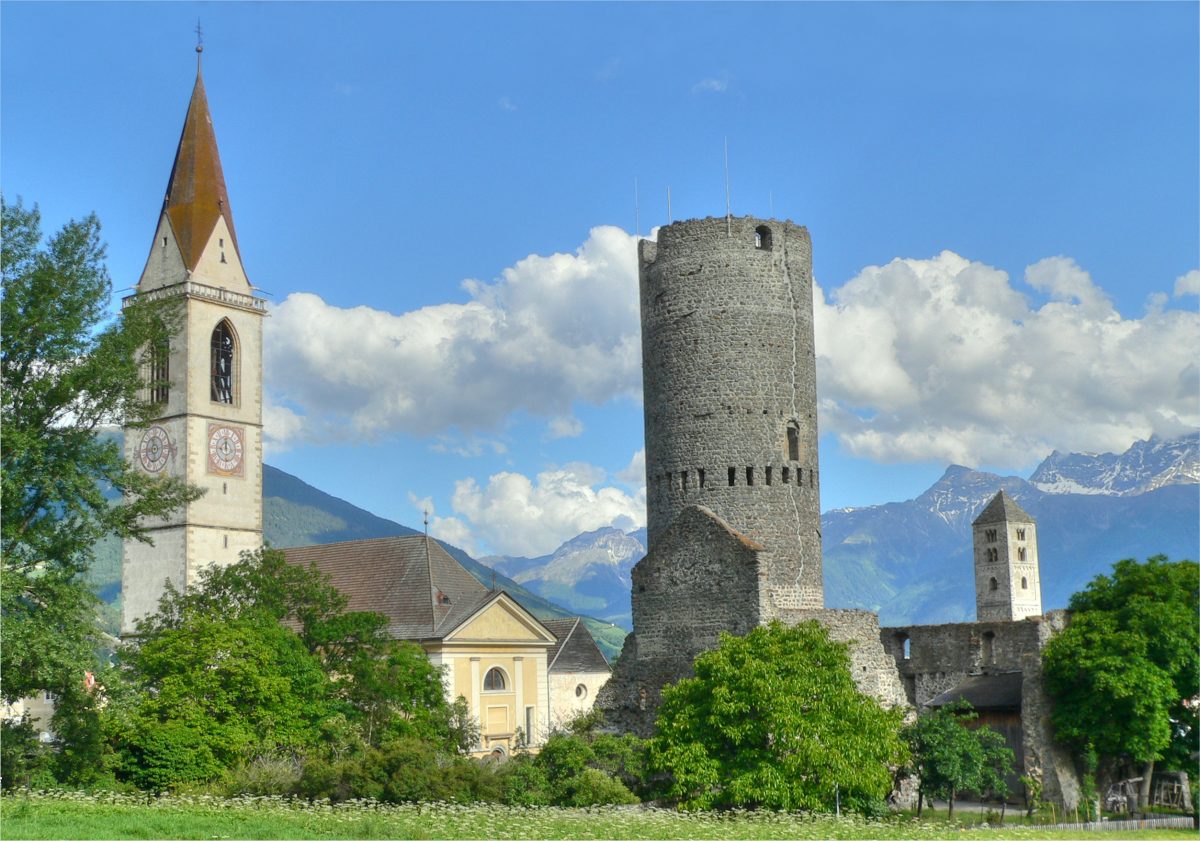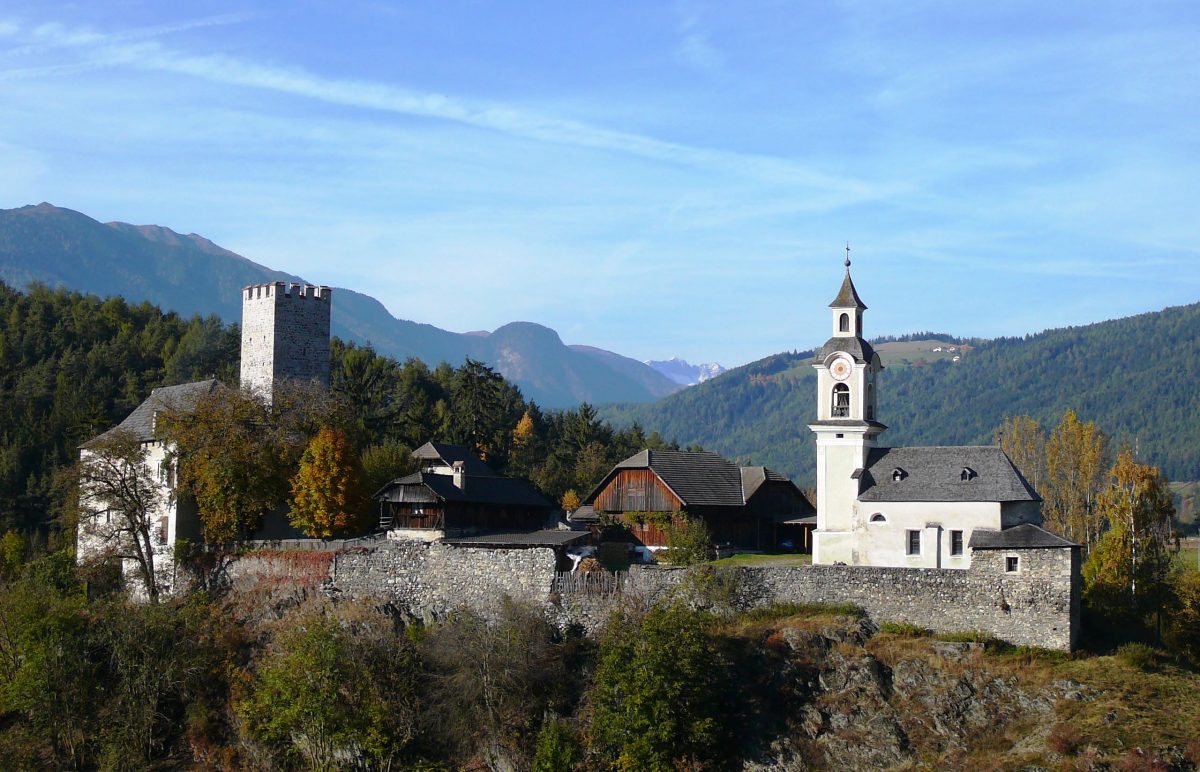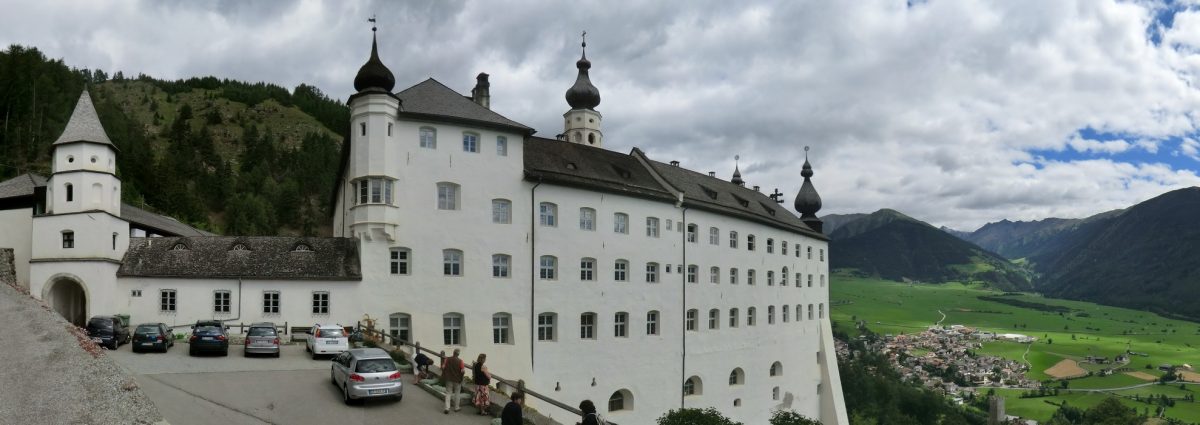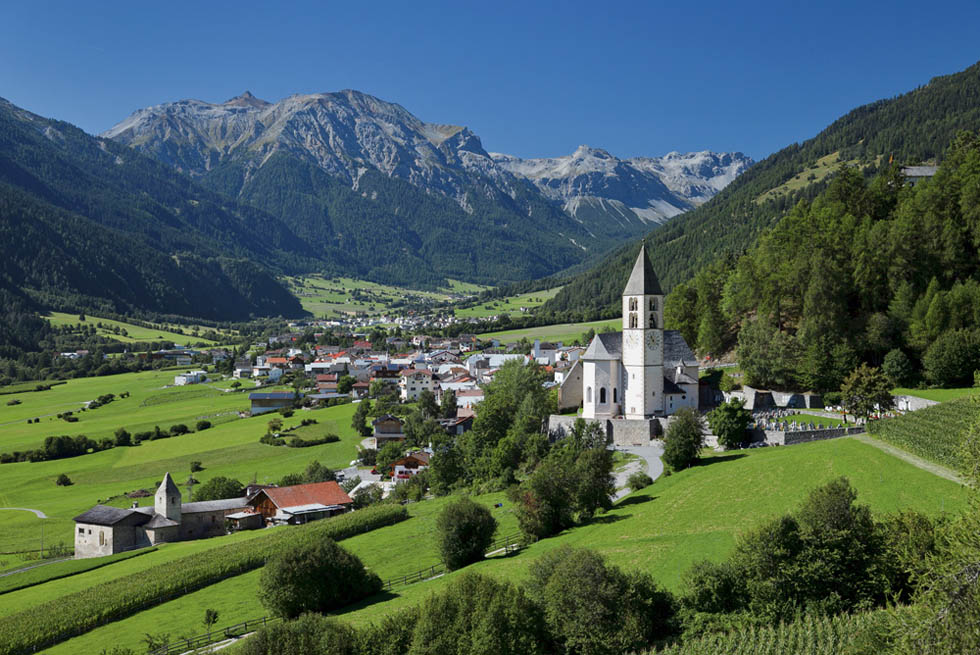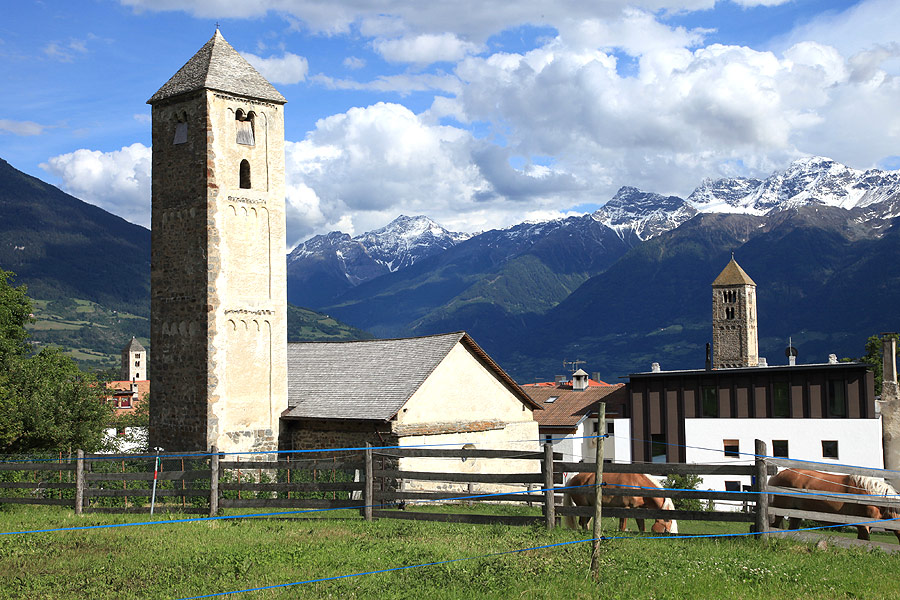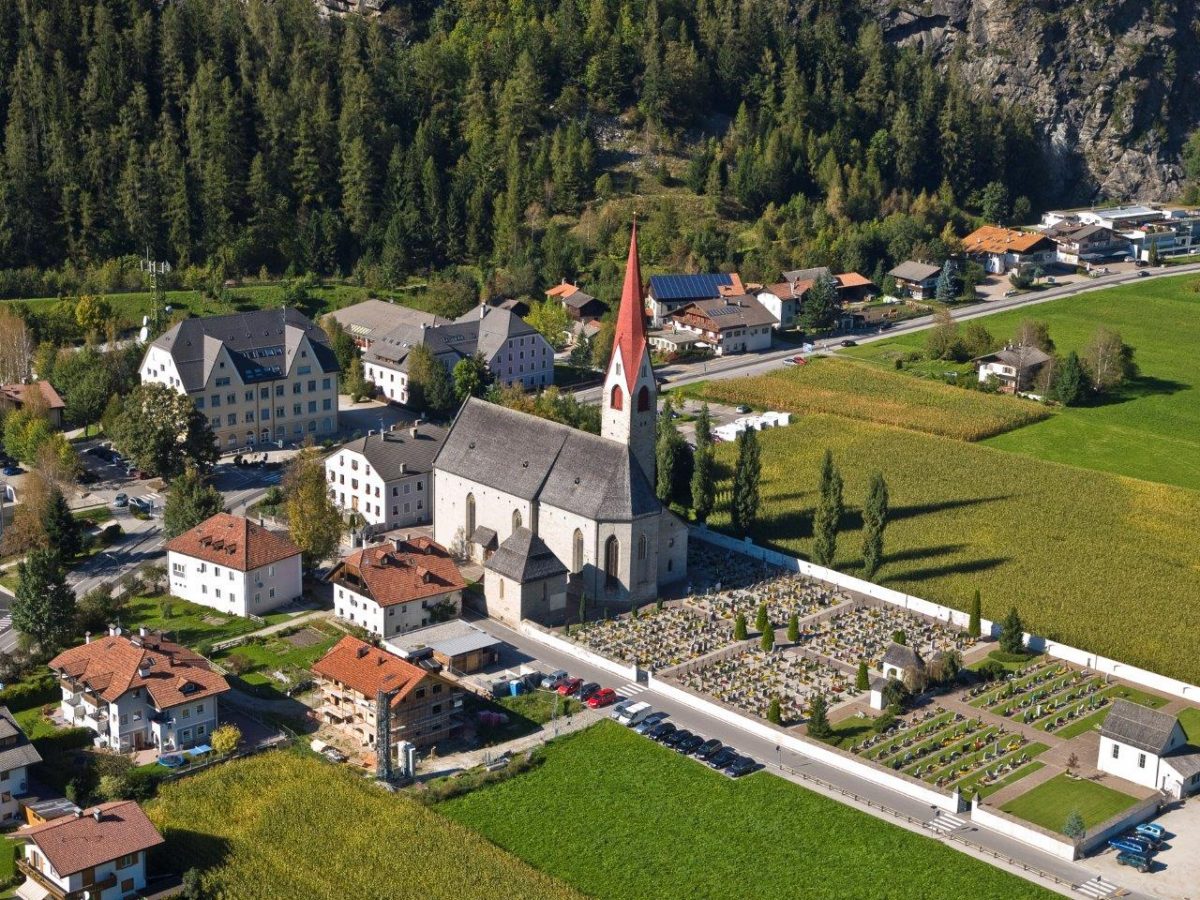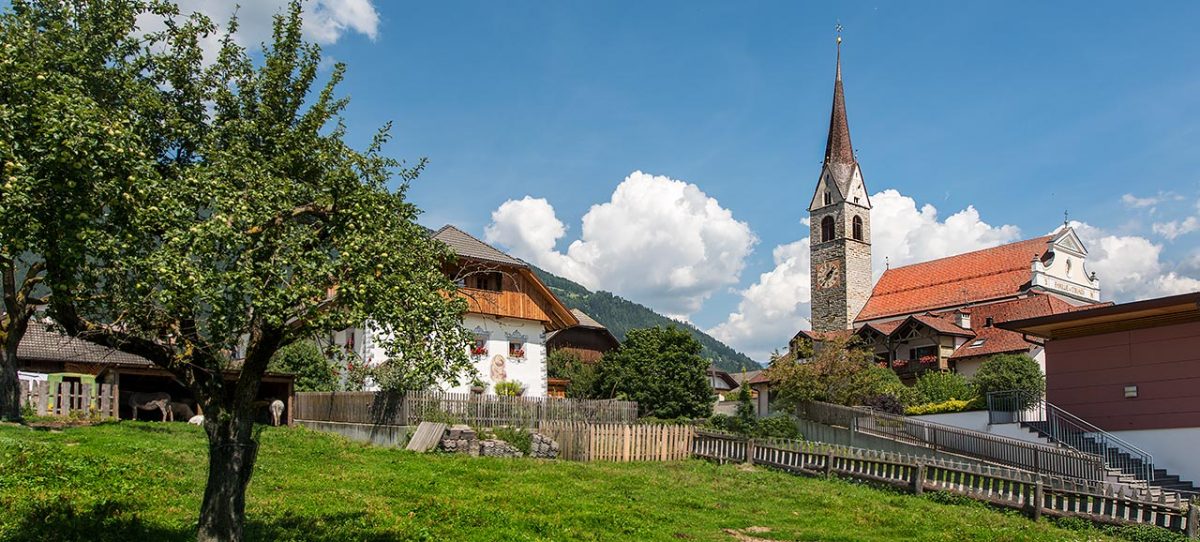How to reach Tubre in Val Monastero
Attractions:
– Castles Rotund and Reichenberg
The small town of Tubre/Taufers is located at 1250 meters above sea level near the border with Romansh Switzerland. This is the westernmost village in the South Tyrol, extending from the Calven battlefield (scene of the famous Battle of Calven), right up to to the Swiss border.
The Romanesque pile village is not only characterized by the image of its clustered houses, but also its Romanesque churches, chapels and hospices as well as the two ruined castles of Rotund and Reichenberg. Tranquility and relaxation dominate village life and helps to preserve its original pristine atmosphere. The cultural life of Tubre remains influenced by its proximity to the Benedictine Convent of St. Johann in Val Müstair, dating back to the times of Charlemagne. This UNESCO World Heritage Site also marks the beginning of the “Stairways to Heaven – Middle Ages in the Heart of the Alps” initiative, also known as the ‘Romanesque Road’.
Art & culture:
The cultural region of Upper Venosta Valley had already served as a valley for travelers in ancient times. Today historic sites, castles, churches and monasteries decorated with frescoes and artwork from over ten centuries ago, bear witness to this and can be visited by guests. The Celts, Romans and Rhaetians like the Venosti, but also the early Christian Middle Ages, left their mark. These include the Roman trade road Via Claudia Augusta, the medieval town of Glorenza/Glurns and many cultural monuments. They turn a trip to Upper Venosta Valley into a very special cultural experience.
Upper Venosta Valley, as “the valley of artists”, also lives up to its cultural and historical heritage with its way of life. Customs and traditions from ancient times go hand in hand with innovation and contemporary architecture. In this unique cultural landscape, hikers follow a trail of mountain churches and enjoy the view from the irrigation channels.
Tasting & Enjoying:
The Upper Venosta Valley is characterized by sunshine, wind and low rainfall. The fertile microclimate rendering in the Upper Venosta Valley is an ideal place for lovers of high-quality fruit, such as the Pala pear, apples, apricots, berries and chestnuts. Other traditional staple products of the regional cuisine are: pasture cheese, rye, spelt and buckwheat.
These delicacies and farm products are real treats for gourmets and are sold directly at the farms or in the markets of this holiday region. Guided tours of the farms are also very popular with guests and locals as are the tastings.
Active holiday:The diverse areas surrounding the Ötztal Alps, the Ortler Group and Sesvenna Group is an attraction for active holiday goers and families year round, and tailor-made for an active holiday in the Upper Venosta Valley.
Hiking, mountain climbing, bicycling and mountain biking on new paths – that is summer in the Upper Venosta Valley holiday area. A very compact, well-maintained and well-signposted network of trails for bikers, recreational cyclists and hikers with many places to take a break runs through the Upper Venosta Valley; also along the mountain refuge huts and alpine pastures high above.
Active vacationers in Upper Venosta Valley discover new paths along the irrigation channel paths of Monte Sole mountain, but also on mountain tours in the Ötztal Alps, the Sesvenna group or Ortles group and on multi-day hikes like the Venosta Valley High Mountain Trail.
Fishing and paragliding, enjoyment in the sport zone SportWell, and archery on a high-alpine 3D panorama-course, make for a very special summer holiday experience in Venosta.
The Family Ski Area Watles in the sunny Upper Venosta Valley provides skiers with excellent infrastructure, groomed slopes and huts with sun terraces. The region also offers winter walking trails and ski touring in the Ötztal Alps, the Ortler region and in the Stelvio National Park, as well as ice skating rinks, sledging runs and romantic horse-drawn carriage rides through the forests. Fans of Nordic ski sport will enjoy the Center for Cross-Country Skiing: sight of numerous international competitions.
An evening visit to the sauna and the fitness room at the Malles sport center Sportwell will get tired muscles regenerated for the next day. Evenings in the Sportwell can also be rounded-off with a bowling game or tennis match.
